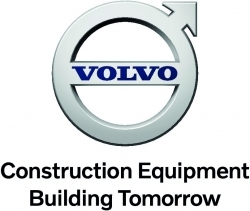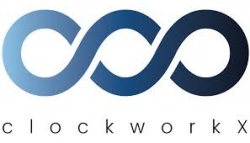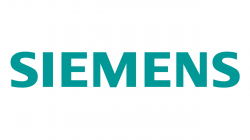Conference Program
Plenary - Day 2
European Innovation Council and innovation funding for industrial vehicles
 Franc Mouwen
Franc MouwenProgram manager
European Innovation Council
Belgien
European Innovation Council EIC is the EU's €10bn flagship innovation funding instrument. As a program manager for architecture engineering and construction, Franc Mouwen supports the EIC in shaping its portfolio in the construction domain, The industrial vehicles sector plays an important role in the ambition of the EU to be a leader in decarbonization (European Green Deal), digitalization, automation and AI.
What the audience will learn
- How EIC supports deep-tech innovation funding in the EU
- How EIC supports innovators in the industrial vehicle ecosystem
- How corporates and investors in the industrial vehicle ecosystem can support shaping the EIC
The (necessary) rise of the robot farmers
 Kyle-James Keen
Kyle-James KeenChief operating officer
Autopickr Ltd
Vereinigtes Königreich von Großbritannien und Nordirland
Automation is vital for agriculture, yet smaller growers struggle to compete as large-scale farms adopt advanced technologies. Autopickr is transforming this landscape with Robotics as a Service (RaaS), offering affordable, flexible access to cutting-edge robotics for hand-picked crops like asparagus. Inspired by historical threshing machine rentals, Autopickr revives this model, enabling small growers to optimize harvesting without the burden of ownership costs. This presentation explores how RaaS empowers growers of all sizes, strengthens the food supply chain and ensures a sustainable future for agriculture by bridging the gap between innovation and accessibility.
What the audience will learn
- The role of robotics in agriculture
- Challenges for small growers
- The Robotics as a Service (RaaS) model
- Historical parallels in agriculture supply chains
- A vision for sustainable farming
Exploring Volvo CE’s leadership in developing electrified construction machinery
 Ahcène Nedjimi
Ahcène NedjimiGlobal electromobility system architect
Volvo Construction Equipment
Frankreich
Volvo CE is driving innovation in construction, developing electric machines while improving conventional ones. Ahcène Nedjimi will highlight how Volvo CE supports customers at every stage of their electrification journey, offering battery electric and conventional machines. He will explain how a multitechnology approach supports diverse industry needs while enabling a transition to cleaner, more efficient work sites. Real-world examples will showcase electrification’s benefits – improving efficiency, reducing emissions and driving sustainability. Nedjimi will also address key challenges like battery advancements and infrastructure readiness. To scale electromobility and shape construction’s future, strong collaboration with customers, policymakers and industry leaders is essential.
What the audience will learn
- Volvo CE's commitment to the global climate goals of the Paris agreement
- 30% of all product launches across the portfolio are new models – demonstrating a commitment to meeting evolving customer needs
- Volvo CE's committment to providing both battery electric and diesel machines, supporting customers at every stage of their electrification journey
- Real-world examples of how electrification is improving efficiency and reducing emissions, along with insights into overcoming challenges
- The importance of collaboration with partners and decision-makers to drive the future of electromobility
Case Study - Battery selection and validation for a horizontal electric driller
 Matthieu Desbois-Renaudin
Matthieu Desbois-RenaudinPresident
Wattalps
Frankreich
 Tyler Dorin
Tyler DorinProject engineer, infrastructure electrification
Vermeer Corporation
USA
After more than two years of extensive testing and validation, Vermeer launched its new D20x22 S3E electric horizontal drill. The challenges of electrification are numerous for the demanding applications of Vermeer machines: to capitalize as much as possible on each development; to deliver in various regions, working in the cold winter of Iowa or Northern Europe up to the hot summer of South Europe or the Middle East; and to deliver maximum power in a limited space. The presentation will explain Vermeer’s reasoning for selecting Wattalps’ innovative immersion cooling technology, before introducing the battery validation process.
What the audience will learn
- The selection of a battery pack maker to electrify series production of off-road equipment
- The validation process of a battery electric driller
- Lessons learned from a two-year validation process
- The effects of battery thermal management on machine productivity
- The importance of cooperation between the battery pack maker and machine manufacturer
Digitalization and smart machines
Can we expect 'software-defined' industrial vehicles?
 Oliver Michael Lythgoe
Oliver Michael LythgoeChief marketing officer
Fétis Group
Vereinigtes Königreich von Großbritannien und Nordirland
Software must rapidly become the defining element of off-highway machinery, driving complexity in system integration, functional safety and lifecycle management. This session explores the transition in electronic and software architectures, and how code will be developed and managed through lifecycles. Key topics include functional safety, connectivity and balancing in-house development with third-party software. As machines become more software-defined, OEMs must adopt a system-level approach to maintain control over performance, safety and regulatory compliance. This presentation provides a roadmap for navigating the off-highway industry's software-driven transformation.
What the audience will learn
- The customer expectations that will drive a software explosion in off-highway vehicles
- The limitations of existing control and software archtectures
- The special challenges for off-highway machines – functional safety, fragmentation
- Where future software will be developed: in-house, open source, third party
Ensuring compliance and efficiency: software updates in modern off-highway vehicles
 Stefan Larndorfer
Stefan LarndorferCEO
Sequality Software Engineering
Österreich
Modern off-highway vehicles rely on a variety of advanced software systems that are critical for seamless operation. From touch displays to engine control units, GPS navigation and telematics, they all contain software that needs to be updated to ensure these systems remain secure, efficient and compliant with evolving regulatory standards. Regulations like NIS2, UNECE R155 and UNECE R156 now place stringent requirements on cybersecurity, software management and vehicle updates, making effective update strategies a cornerstone of operational success. The presentation will give an overview of current embedded update technologies and identify important practices for managing software updates.
What the audience will learn
- Why we need software updates
- Overview of NIS2 and R156/R155 requirements
- Embedded system software update technologies
- How to ensure robust and secure updates
- Fleet management and staging
Building autonomous systems through advanced simulation
 Dominik Nöth
Dominik NöthHead of mobile machinery and industrial automation
Gofore
Deutschland
The development of autonomous machines is changing the way we interact with them and requires new development methods and approaches. The evolution is shifting from traditional algorithms and research to simulation and AI-based methods. High-performance hardware enables sensor fusion and neural networks to work in tandem, thereby increasing autonomy and task processing capabilities. To maintain efficiency when training neural networks, a simulation-based approach is imperative. This approach offers distinct advantages, including monitoring, testing and continuous improvement using digital twins. As experts in digitalization, we support this with comprehensive services and capabilities ranging from simulators to digital lifecycle management.
What the audience will learn
- The needed steps for developing and maintaining autonomous systems. The important differences between traditional development and simulation
- How the evaluation and fusion of sensors can be designed efficiently and reliably right from the development stage
- The main benefits of digital twins and simulation-based approaches to the development of autonomous systems
From vulnerability to resilience: a case study on safeguarding connected vehicles
 Erwin Baumann
Erwin BaumannDirector of business development and product management
MRS Electronic
Deutschland
As digitalization transforms mobile machinery, safeguarding data and operational integrity is critical. But achieving robust cybersecurity doesn’t have to mean starting from scratch. This session will present innovative approaches to retrofitting existing vehicle architectures with advanced cybersecurity measures. Through a compelling case study of a successful OEM implementation, attendees will gain actionable insights into how to enhance system security while minimizing disruption and cost. Learn how proven solutions can protect your equipment against cyber threats without the need for a complete system redesign.
What the audience will learn
- Key threats to connected systems and practical solutions to mitigate them
- How to retrofit existing electrical architectures with advanced cybersecurity measures
- Real-world insights from a successful OEM case study
- Actionable steps to futureproof operational integrity in digitalized machinery
Challenges and solutions for industrial vehicle cybersecurity
 Dr Christian Geiss
Dr Christian GeissCEO
ClockworkX
Deutschland
The requirements for cybersecurity in industrial vehicle technology are increasing and becoming mandatory with the EU Cyber Resilience Act, as well as ISO 21434. The presentation will show how to successfully negotiate the upcoming challenges and prepare products and organizations for the future.
What the audience will learn
- Risk analysis in industrial cybersecurity
- How to build a cybersecurity management system
- Importance of distributed development in cybersecurity
- How to manage cybersecurity monitoring of products and vulnerability management
- How to prepare for certification
Artificial intelligence
AI-powered evolution: transforming safety, automation and risk perception in industrial vehicles
The panel will discuss AI-safety for highly automated vehicles; enhancing risk perception with AI-driven reasoning; AI in automation and safety; and AI as a co-pilot versus full autonomy – finding the right balance.
 Pedro Ribeiro
Pedro RibeiroInnovation expert
Arcure
Frankreich
 Matthias Strobel
Matthias StrobelCEO
InMach Intelligente Maschinen
Deutschland
Embodied intelligence for heavy machinery
 Bjarne Johannsen
Bjarne JohannsenCo-founder and CTO
Sensmore
Deutschland
Sensmore brings embodied intelligence to heavy machinery. We pioneer the development of embodied AI and VLAM for heavy machinery in mining and construction. Our products are deployed at the sites of the world's largest mining and building material companies, delivering capabilities that range from operator assistance to full autonomy.
What the audience will learn
- End-to-end learning in the physical world
- VLAM for intelligent reasoning in robotics
- Deployment stories at real customers
AI (Artificial Intelligence) in power electronics for industrial vehicles
 James Spencer
James SpencerTechnical product specialist
Murata
Vereinigtes Königreich von Großbritannien und Nordirland
This white paper aims to explore the potential impact AI (Artificial Intelligence) on the power electronics industry for the industrial vehicle sector as off-road vehicles become more electrified. AI is set to disrupt many sectors, however in the power electronics sector advances in AI is set to enable improved design and optimisation, predictive maintenance, fault detection and diagnostics, energy efficiency and performance tuning, automation in manufacturing, integration with smart grids and IoT, enhanced simulation modelling and design for sustainability. This white paper aims to explore each of these and their direct impact within the industrial vehicle sector.
What the audience will learn
- How AI (Artificial Intelligence) can be applied in power electronics.
- What impact AI (Artificial Intelligence) will have for power electronics in the industrial vehicle sector?
- AI enabled power electronics predictive maintenance, fault detection and diagnostics for the industrial vehicle sector.
- AI enabled power electronics energy efficiency and performance tuning for the industrial vehicle sector.
- AI enabled power electronics enhanced simulation, modelling and design for sustainability for the industrial vehicle sector.
Electrification, powertrains and alternative fuels (continued)
Charging electric construction machines from a solar-powered energy hub
 Dr Peter van Duijsen
Dr Peter van DuijsenTeam leader DC Power Lab
THUAS University of Applied Sciences Delft
Niederlande
Electrically powered construction machinery is emission free and sustainable if charged using green energy resources such solar and wind energy. In this case study, a solar-powered charging hub is presented, for overnight charging of construction machinery, from crawler cranes and wheel loaders to rollers. The presentation will cover sustainable charging of electric construction machinery, a DC charging hub with mobile solar feeding, and power congestion management inside the charging hub.
What the audience will learn
- Sustainable charging of electric construction machinery
- DC charging hub with mobile solar feeding
- Power congestion management inside the charging hub
Virtual engineering workflow of a hybrid electric wheel loader
 Dr Annika Foydl
Dr Annika FoydlPortfolio development manager
Siemens Digital Industries Software
Deutschland
This presentation focuses on optimizing and validating the performance of a 20-ton wheel loader through electrification by leveraging a virtual engineering workflow. The workflow encompasses powertrain pre-sizing, detailed design and integration, and online verification and validation, for example through an operator-in-the-loop simulator. This approach minimizes physical prototyping, accelerates and streamlines development cycles and provides solutions for energy and thermal challenges while enhancing machine performance.
What the audience will learn
- Leverage a virtual engineering workflow to speed up the product development process and make it more robust
- Powertrain sizing optimization: use optimization techniques to meet high-level requirements for electrification
- Reduced order modeling techniques: leverage test, CFD and FEA data to feed system simulation platform
- Integrate control system SW: verify control functions and machine performances through operator-in-the-loop techniques
Rethinking excavator system architecture with decentralized electrohydraulic drives
 Andrew Latham
Andrew LathamDirector
Orion Research
Vereinigtes Königreich von Großbritannien und Nordirland
Electrification of off-highway equipment such as excavators presents unique challenges, particularly regarding system efficiency. Low efficiency necessitates larger battery packs to ensure full-day operation. Orion Research has identified that, in conventional excavators, up to 80% of hydraulic energy is lost as heat. This talk explores the transformative potential of a modular, decentralized electrohydraulic drivetrain to dramatically enhance efficiency, extend operational range and reduce battery size. We will share key insights gained from the development and testing of a prototype electrohydraulic system integrated with an excavator boom, highlighting its implications for the future of sustainable construction equipment.
What the audience will learn
- Learn how conventional excavators lose up to 80% of hydraulic energy as heat, affecting efficiency and electrification viability
- Discover the advantages of modular, decentralized electrohydraulic systems for off-highway equipment
- Explore how innovative drivetrains improve efficiency, reduce energy loss and extend operational range for electric machinery
- Understand how improved system efficiency can minimize battery size, lowering costs and enabling practical electrification
- Gain insights from the development of a prototype electrohydraulic system integrated with an excavator boom